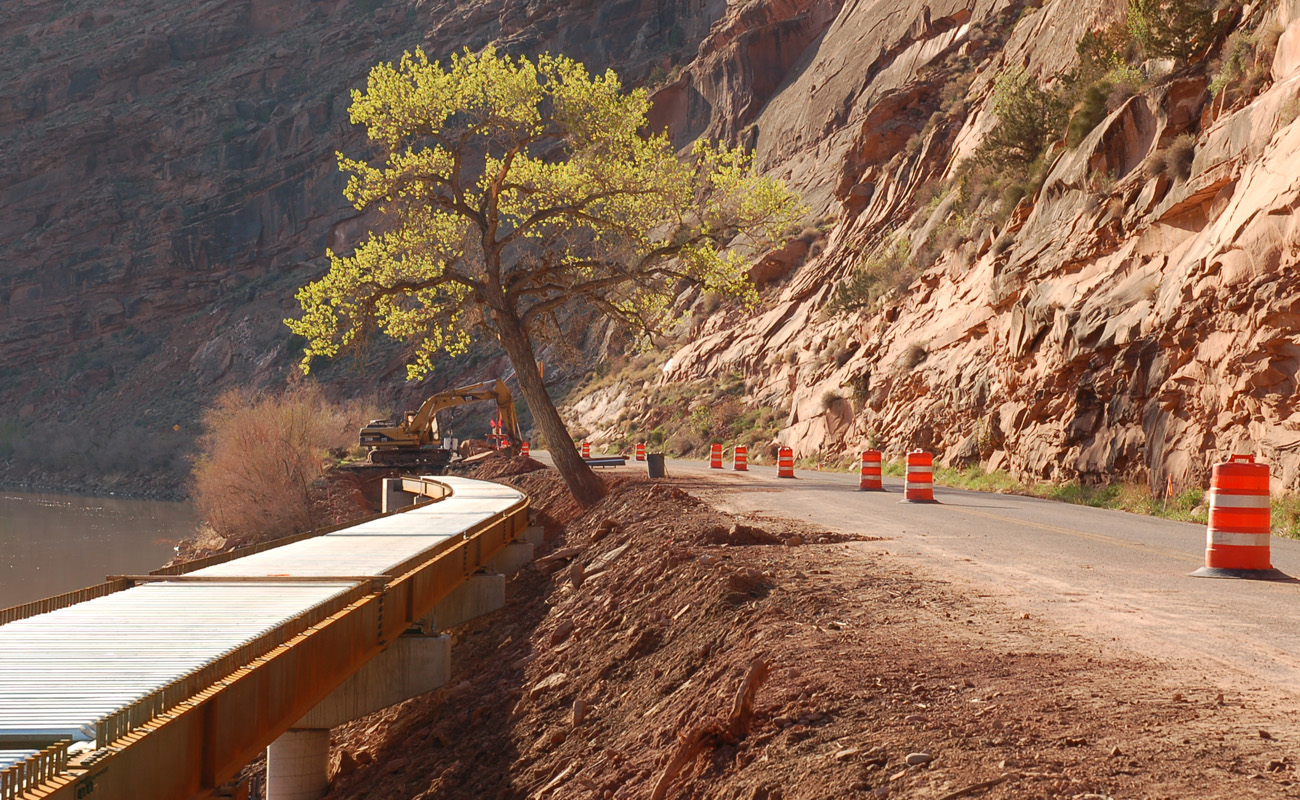The Colorado River Pathway will be a little longer than was planned this fall, due to $900,000 in additional funds recently granted by the Paul S. Sarbanes Transit in Parks Program.
“With the additional funding we can go ahead and award the portion we had pulled out of the original contract,” said Dave Dilman of Horrock’s Engineering, the firm that designed the Colorado River Pathway. “This would allow us to build the next segment structure.”
Grand County originally planned a $9.2 million project that included a transit hub and pedestrian tunnel at the junction of Hwy 191 and State Route 128, as well as approximately 1.5 miles of additional pathway alongside State Route 128.
It was decided to cut a quarter-mile segment of trail from the original plans this fall.
Flatiron Construction was awarded a reduced $6.4 million contract in September, allowing the county to retain $2.8 million for contingency.
With the additional $900,000 in funding, the county council approved a change in the contract at their April 16 council meeting to build the quarter-mile segment that includes an 800-foot bridge structure and 500 feet of retaining walls. The project now totals $10.1 million, which includes a reduced contingency budget of $350,000.
The Colorado River Pathway along State Route 128 begins at the junction at Hwy 191 and ends at Negro Bill Canyon near mile marker 3. The pathway is intended to provide safe travel for cyclists and pedestrians along the narrow two-lane highway.
There will be a half-mile gap where bicycles and pedestrians will use the narrow shoulder of the road near Negro Bill Canyon until more federal grants are awarded.
Kim Schappert of Moab Trails Alliance applied for additional funds from the federally funded program this fall. This was the final grant award available.
“We lucked out one more time,” Schappert said. “The $900,000 was the remaining funds in the Paul S. Sarbanes program.”
Schappert plans to research and apply for grants to complete the half-mile gap, though she said “federal money is hard to come by now.”
“This is an ongoing project. We’ve been breaking it down into different phases,” Schappert said. “Now we have a phase four – the part that hasn’t been funded yet.”
Schappert was unable to confirm how much it would cost to complete the half-mile gap remaining.
Dilman told the county council at their April 16 council meeting that the change in the contract needed to be done quickly.
“Timing is critical on this. The river is still low. We want to get the foundation work before there is high water. We’re pushing to get it done,” Dilman said.
Krissie Braun, the county’s community development director, said that the contractors have been running ahead of schedule.
“Even with this additional work, we expect them to end at the same time,” Braun said.
If all goes as planned, the transit hub and pathway should be completed by October.
Contractors are now building a half-mile elevated path and retaining walls from Lion’s Park to a one-mile stretch of asphalt path that is now in place and extends through Goose Island Campground. A second one-mile elevated path will be built alongside the highway from the north edge of Goose Island Campground to stop about a half-mile of a mile short of Negro Bill Canyon.
Work has also been done near Negro Bill Canyon, including a bicycle path through Granstaff Campground and a bicycle/ pedestrian bridge at the canyon itself.
During construction, traffic has been reduced to one-lane with waits of up to 15 minutes.
The road has been completely shut down between the hours of 11:30 p.m. and 5:30 a.m. Sunday through Thursdays when contractors are using a crane to place girders and bridge decks.
A crane lifts the girders from the transport truck to the bridge abutment.
“They’re swinging two girders at once with the deck on it ready to go,” Dilman said. “They’re setting a girder about every half hour, they’re moving pretty fast.”
Nighttime closures should be completed this week, but may resume later this summer when contractors will use the crane to place drill shafts, columns, girders and bridge decks for the 800-foot bridge structure that has just been approved.




